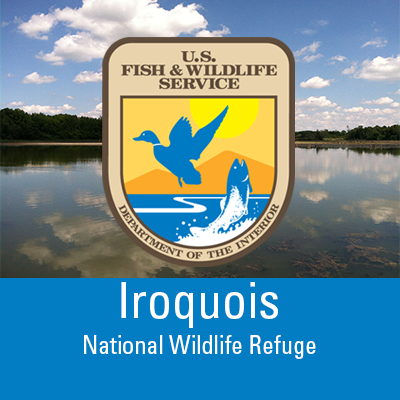Active bird migration expected at Iroquois Wildlife Refuge
Press Release, Iroquois National Wildlife Refuge

Various shorebirds are already heading through the area, providing special sightings. Route 63, which connects the refuge’s Orleans and Genesee county sides, re-opened this afternoon. The refuge’s visitor center will be open Saturday until 4 p.m., with representatives available to lend binoculars and field guides, and answer questions.
For woodpeckers, warblers, nuthatches and brown creepers, walk the Kanyoo Trail located off of Lewiston Road. The Kanyoo Trail is a short loop hike of just over 1 mile that takes visitors through forest and marsh habitats. A bumper crop of fallen acorns is attracting red squirrels. The damper, milder weather is starting to bring colorful mushrooms and fungi to fallen logs and mossy hollows. The woods are full of berries and wild grapes, attracting a variety of wildlife. Please be aware that foraging for human food is not permitted at Iroquois National Wildlife Refuge. At this time of year, most warblers have molted out of their showy summer breeding plumage, so they are notoriously difficult to identify, but it can be a fun challenge. Along the boardwalk through the marsh, keep an eye out for swimming muskrats and look for painted turtles basking in the late summer sun.
For wading birds, ducks, shorebirds, egrets, and sandhill cranes, try the Feeder Road Trail. This trail comes off of the Kayoo Trail parking lot on Lewiston Road. Walk along the wall of the red building to come out along Kumpf Marsh. The marsh water level is low, and the remaining pool of shallow water and surrounding mud flats are a good place to observe greater and lesser yellowlegs, least sandpipers, and winged rarities as migration season often brings unexpected visitors like the glossy ibis recently seen at this location. Canada geese are starting to arrive in large numbers, with mallards, blue-winged teals, and a scattering of other duck species paddling in the pool.
Resident bald eagles, common gallinules, black-crowned night herons, and other water loving birds can be seen from Cayuga Overlook without additional walking. The overlook parking area is on Lewiston Road.
For fields of beautiful purple, gold, and pink wildflowers, warblers, various sparrow species, and migrating monarch butterflies, hike the Visitors’ Center Trail at 1101 Casey Rd., Basom. This one-mile loop trail, starting at the right of the building, is fully graveled and is an easy walk. The pine grove at the back of the trail can be a good place to see warblers. Check out the floating bridge for a closer look at the marsh, where visitors may see belted kingfishers hunting, and huge flocks of red-winged blackbirds swirling up from the cattails as they group together and prepare to migrate south. The newly-installed benches along this path are a nice place to have a picnic lunch, and you can stop at the visitor center to see the educational displays, use the bathroom, and visit the Flyway Nature Store.
Long-billed dowitchers were recently seen at Center Marsh, along Sour Springs Road. Water levels are low, making it a good place to see herons, egrets and shorebirds. For bird watching from your car, be sure to stop at nearby Ringneck Overlook for a beautiful Orleans County marsh vista.
Gray catbirds, cedar waxwings and other fruit eaters are flocking to the berry bushes along Swallow Hollow nature trail off Knowlesville Road on the eastern edge of the refuge. Local birders have reported a huge variety of migratory warblers at this trail over the past few weeks This is also a reliable spot to see flocks of rusty blackbirds in late fall foraging in wet leaf litter. Deer are common along this trail, and it is a wonderful place to look for thrushes and other songbirds. Swallow Hollow’s 1.3- mile loop winds through forest and marsh and includes a long section of elevated boardwalk. Listening for calling chickadees can be a good way to locate the mostly silent warblers at this time of year, since they often flock together to forage.
The 2.5 mile out-and-back Onondaga Nature trail is another good place to look for warblers and is an especially nice spot to observe mushrooms and to enjoy the fall foliage.
Come visit the trails and overlooks of Iroquois National Wildlife Refuge for your own seasonal adventure! The refuge is open from sunrise to sunset.
The visitor center is located at 1101 Casey Road between route 77 and Route 63. For more information, hours, trail maps, directions and upcoming events see the refuge website (www.fws.gov/refuge/iroquois), or the Facebook page, Iroquois Observations.





























































